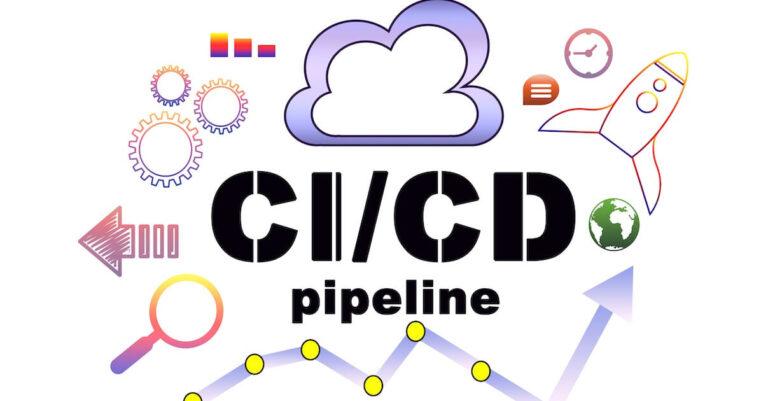The software development industry has evolved profoundly in the last couple of years with new tools, methods, and concepts. Every time something new is introduced, it spikes interest and provokes the question: how is it different from what is already being practiced? And what better can be achieved with this new concept, tool, or practice?
Site reliability engineering or SRE is now the talk of the town among IT and operations companies and has gained a lot of traction in recent years. However, it’s constantly been compared with DevOps solutions, maybe just because SRE is defined on many sites that it offers the same advantages as DevOps, such as automation, promotes a cultural change and standardization – a philosophy similar to DevOps adoption.
Now, we want you to know that SRE shares the same objectives as DevOps, like an enhanced collaboration between teams and the adoption of automation at every step of the project release cycle to ensure resilient and reliable software. But SRE is different from DevOps. These are the two sides of the same coin as IBM described. DevOps delivery model focuses on what is required to be done; Site Reliability Engineering focuses on how things must be done.
In this blog post, we will dive deeper to understand why both SRE and DevOps are required in software development, how these complement each other, and the fundamental differences both share.
Why Is Site Reliability Engineering Required?
The purpose of a Site Reliability Engineer is to keep the organization focused on what is most important to its customers and ensure that the platforms and services they rely on are available when they need them. Other companies that have adopted the SRE approach in their organizational structure include LinkedIn, Dropbox, Airbnb, IBM, Netflix.
SRE teams oversee code deployment, configuration, and monitoring, along with availability, latency, change management, emergency response, and capacity management of the services they provide.
Several issues resolved in the SRE model:
- Toil avoidance
- Eliminate poor supervision
- Establish a healthy incident management system
Why Is DevOps Required?
According to the changing needs of enterprise users, with the constant demands to add new features and services, these changes need to be implemented faster but to keep the production system out of any interruptions due to system changes.
And that’s where DevOps comes into play by merging the development and operations teams into one structured workflow that meets users’ needs with faster deployments but in a robust and integrated environment.
DevOps has tried to solve the problems:
- Provides added value to customers
- Reduce production costs
- Provides a very transparent work environment
- Shorten the cycle time
- Improved market time
What Role Does SRE Play In DevOps, Exactly?
Site reliability engineering is gaining widespread popularity as a foundation for DevOps implementation. Site reliability engineering focuses on establishing a team of engineers who have a good background in operation. Therefore, SRE implementation more effectively eliminates workflow and communication problems.
(You can read here why is site reliability engineering important in software development and its best practices.)
In addition, it provides support to the DevOps team when developers are overwhelmed with operational tasks and require more specialized knowledge. Based on new features and codebases, while DevOps supports efficient operation through development channels, SRE aims to maintain the balance between creating new features and reliability. Below are four aspects of the project development and release cycle, where DevOps and SRE work together to provide every minute detail:
1. Monitoring and Remediation:
DevOps always discusses the situation before a failure occurs. In addition, it ensures that conditions do not lead to system outages.
The SRE teams, on the other side, look after the consequences of the failure. They take the help of a postmortem report to analyze the root cause. The primary goal of SRE is to maximize uptime of the system and eliminate failures for long-term reliability.
2. SDLC (Software Development Life Cycle) Role:
The primary focus of DevOps during software development is on the efficient creation and delivery of software products while ensuring Zero Downtime Deployment (ZDD). DevOps also stressed on the identification of blind spots in infrastructure and applications.
The site Reliability Engineer on the other side, efficiently manages IT operations after the application deployment. Therefore, it must also be able to withstand high application uptime and stability in a production setting.
3. Price and Speed of Incremental Change:
DevOps is about quickly releasing new updates/features, deploying them quickly, and maintaining continuous integration and development. In addition, the costs of implementing all this are minimal.
SRE focuses on instilling resilience and robustness in new updates/features. It does, however, anticipate slight modifications at regular periods. It allows for more space to track changes and take corrective action in the event of a failure. Furthermore, the bottom line is effective testing and repair to reduce failure costs.
4. Prime Measurements:
CI/CD sits at the center of the DevOps measurement strategy. As a result, it prioritizes process monitoring and workflow productivity to maintain a good flow of feedback.
(Learn more about how CI/CD stands for continuous integration, continuous delivery, and continuous deployment)
SREs, on the other hand, manage IT operations using specific criteria such as service level indicators (SLIs) and service level objectives (SLOs).
DevOps has become common practice in organizations over the past few decades. In recent years, however, there have been witnesses that organizations have embarked on a path to product orientation and continuous reliability improvement. SRE helps organizations achieve this, with DevOps as an integral part of the system, leveraging actual microservice and agility architectures.
Radical Differences Between Site Reliability Engineering and DevOps
- Eliminating silos within an organization is a primary objective of DevOps, where SRE empowered the efforts by promoting sharing ownership of production with developers. SRE uses a single tool to ensure both developers and operations are on the same ground.
- DevOps accepts failure as an inevitable occurrence in SDLC and focuses on preventative measures; SRE stresses finding the root causes of failure and incorporating failure costs into the budget.
- DevOps gradually releases changes, but SRE carefully tests changes before pushing full-blown release.
- Incorporating tools and automation are supported by both DevOps and SRE, but SRE consistently looks to eliminate redundancy with automation opportunities.
- While DevOps measures everything, SRE defines and measures key performance indicators to track the progress and health of systems, such as efforts, outages, uptime, and availability.
Conclusion
To manage faster releases and avoid failures, organizations must collaborate on DevOps and SRE. While both promote adopting automation as a vital process, they differ in their approaches to project development and ensuring high reliability to organizations. Organizations must analyze their data before and after implementing DevOps and Site Reliability approaches in their business to attain measurable benefits.
Recommended reading!




